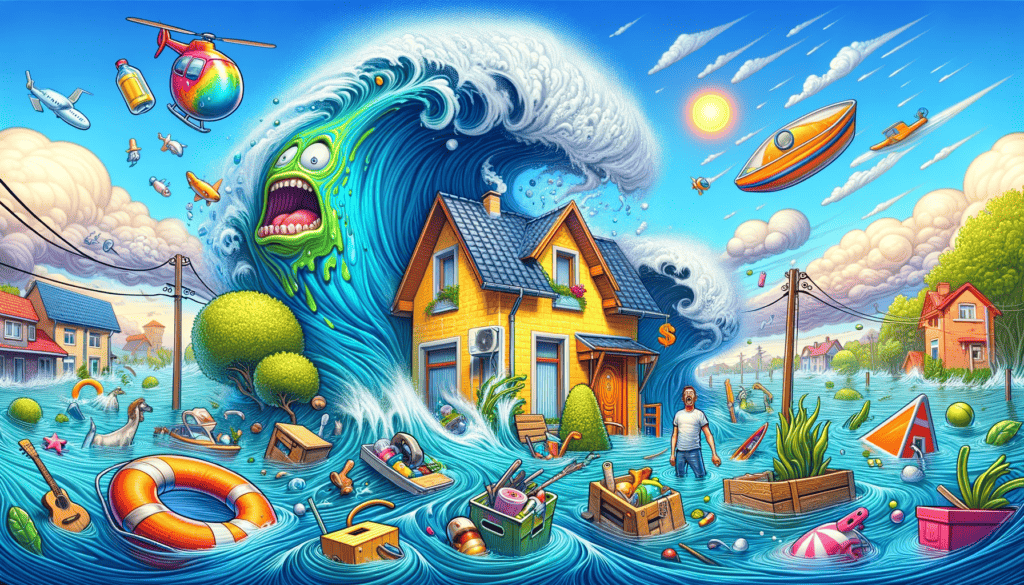
Floodplains, with their picturesque landscapes and proximity to water bodies, can be tempting locations for building a home. However, this choice comes with significant risks and drawbacks. This article delves into the various reasons why building a house in a floodplain might be a bad idea, exploring environmental, financial, and safety aspects.
Understanding Floodplains and Flood Risks
The Nature of Floodplains
Floodplains are areas adjacent to rivers, lakes, or oceans that are subject to periodic flooding. These areas are naturally designed to accommodate excess water during heavy rains, storms, or snowmelts. While they play a crucial role in the natural ecosystem, floodplains are inherently unstable and unpredictable for residential purposes.
The Probability and Impact of Flooding
Living in a floodplain significantly increases the likelihood of experiencing a flood. Floods can vary in severity, from minor inundations that recede quickly to catastrophic events causing widespread damage. The impact of flooding is not only immediate but also long-term, affecting soil stability and the structural integrity of buildings.
Climate Change and Increased Flooding Risks
Climate change exacerbates the risk of flooding in these areas. With rising global temperatures, weather patterns are becoming more erratic, leading to increased instances of extreme rainfall and storms. This amplifies the risk for homes in floodplains, making them even more vulnerable to flooding events.
Financial and Insurance Considerations
High Costs of Flood Insurance
Owning a home in a floodplain often necessitates purchasing flood insurance, which can be significantly more expensive than standard homeowners’ insurance. These high costs reflect the increased risk of property damage due to flooding.
Depreciation of Property Value
Properties in floodplains may face depreciation due to the high risk of flooding. This can affect the long-term investment value of a home, making it less appealing to potential buyers and reducing its resale value.
The Burden of Repair and Recovery Costs
Recovering from a flood can be financially draining. Repair costs for flood damage can be substantial, and not all damages are covered by insurance. Homeowners may face out-of-pocket expenses for repairs, renovations, and replacements of damaged property.
Safety and Health Hazards
Immediate Dangers During Flood Events
Floods pose immediate physical dangers, including the risk of drowning, injuries from debris, and structural failures. Rapidly rising waters can trap residents, making evacuation difficult or impossible.
Long-Term Health Risks
Floodwaters are often contaminated with sewage, chemicals, and other pollutants, posing severe health risks. The aftermath of flooding can lead to mold growth, which is hazardous to respiratory health, especially for individuals with allergies or asthma.
Impact on Mental Health
Living in a flood-prone area can be stressful, with constant worries about potential flooding, especially during storm seasons. This anxiety can have profound effects on mental health, contributing to stress-related illnesses and a decreased quality of life.
Environmental and Community Impacts
Disruption of Natural Floodplain Functions
Building in floodplains can disrupt their natural functions, such as water filtration and providing habitats for wildlife. This can have cascading effects on the broader ecosystem.
Strain on Community Resources
Areas prone to flooding require significant investments in infrastructure and emergency services. Frequent flooding can strain local resources, leading to increased taxes and reduced availability of services for residents.
More Things to Consider
Regulatory Challenges and Restrictions
Building in a floodplain often comes with stringent regulations and building codes designed to mitigate flood risks. Navigating these regulations can be complex and may limit building options or require expensive modifications.
Accessibility and Isolation Issues
During floods, access to and from a floodplain property can be severely restricted, leading to isolation. This can impact emergency services’ ability to reach the area and disrupt daily activities like commuting to work or school.
Community and Social Impacts
Living in a flood-prone area can affect community dynamics. The constant threat of flooding can lead to decreased community investment and a transient population, which may impact the social fabric of the area.
Future Climate Uncertainties
Predicting the future impact of climate change on specific regions is challenging. This uncertainty adds an additional layer of risk for homeowners in floodplains, as future conditions may exacerbate existing problems or introduce new challenges.
In conclusion, while the allure of living near water bodies is undeniable, the decision to build a house in a floodplain should be made with careful consideration of the numerous risks and challenges. Understanding the implications of such a decision is crucial for the safety, financial stability, and overall well-being of potential homeowners.






Leave a Reply